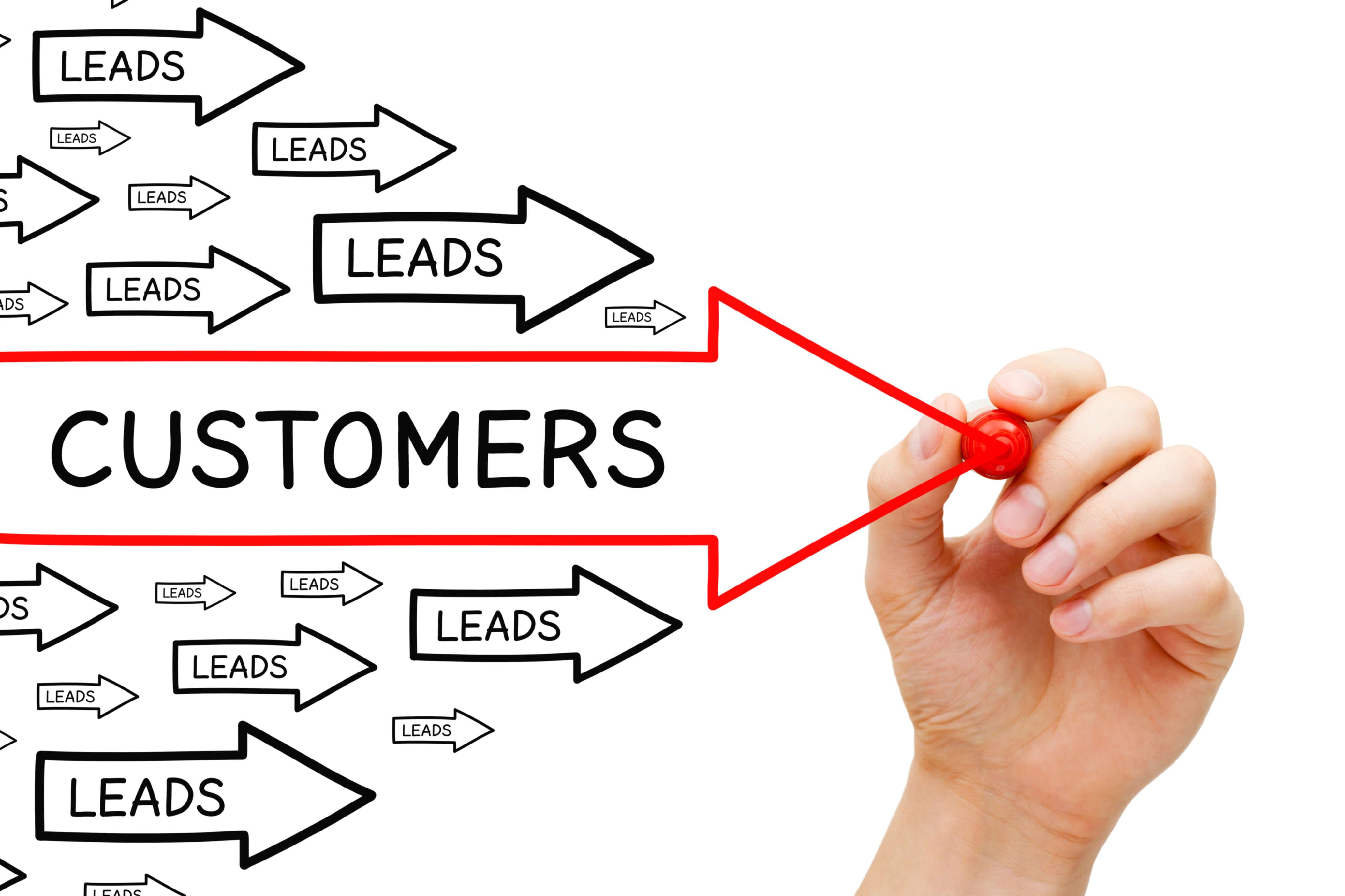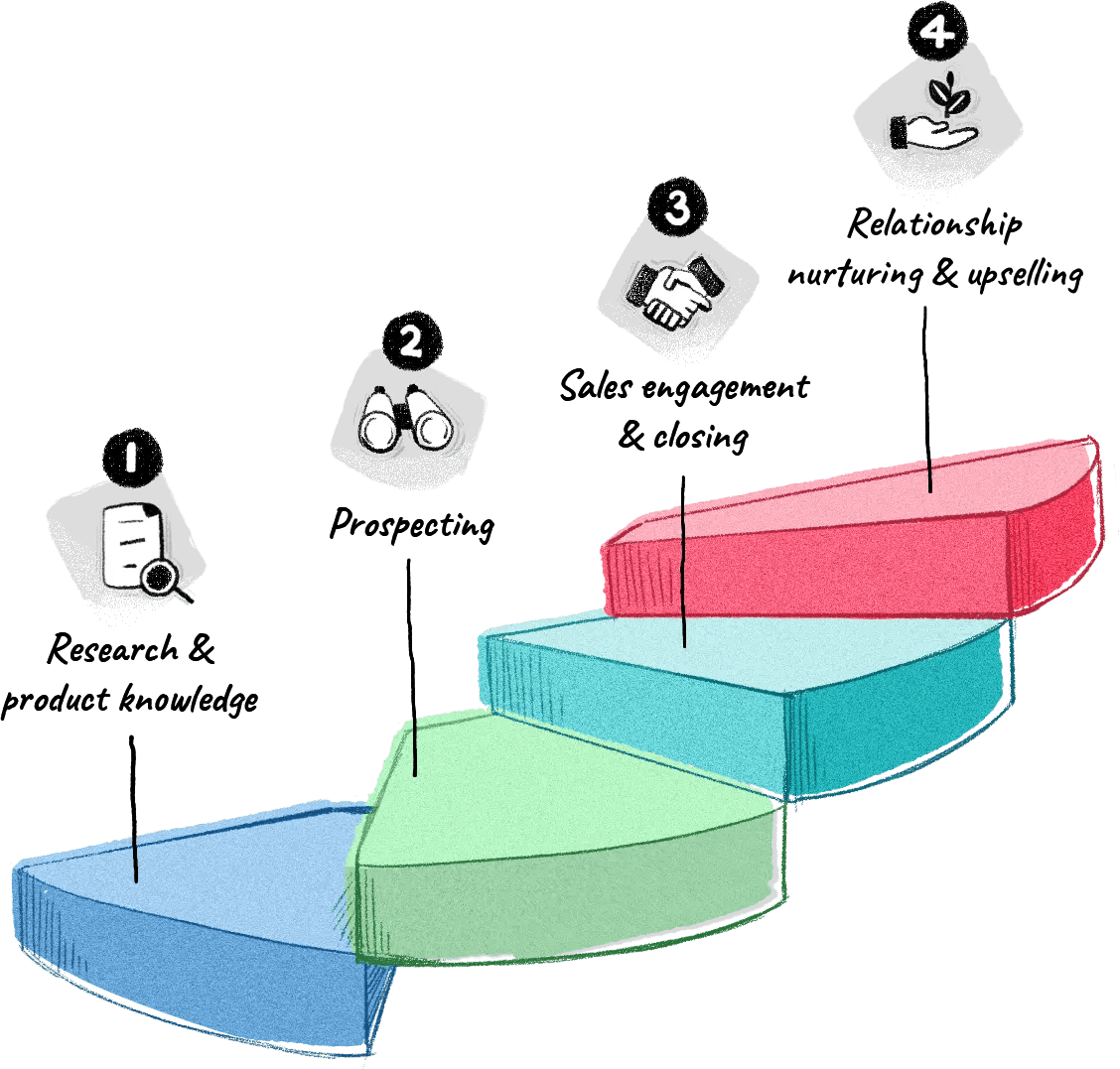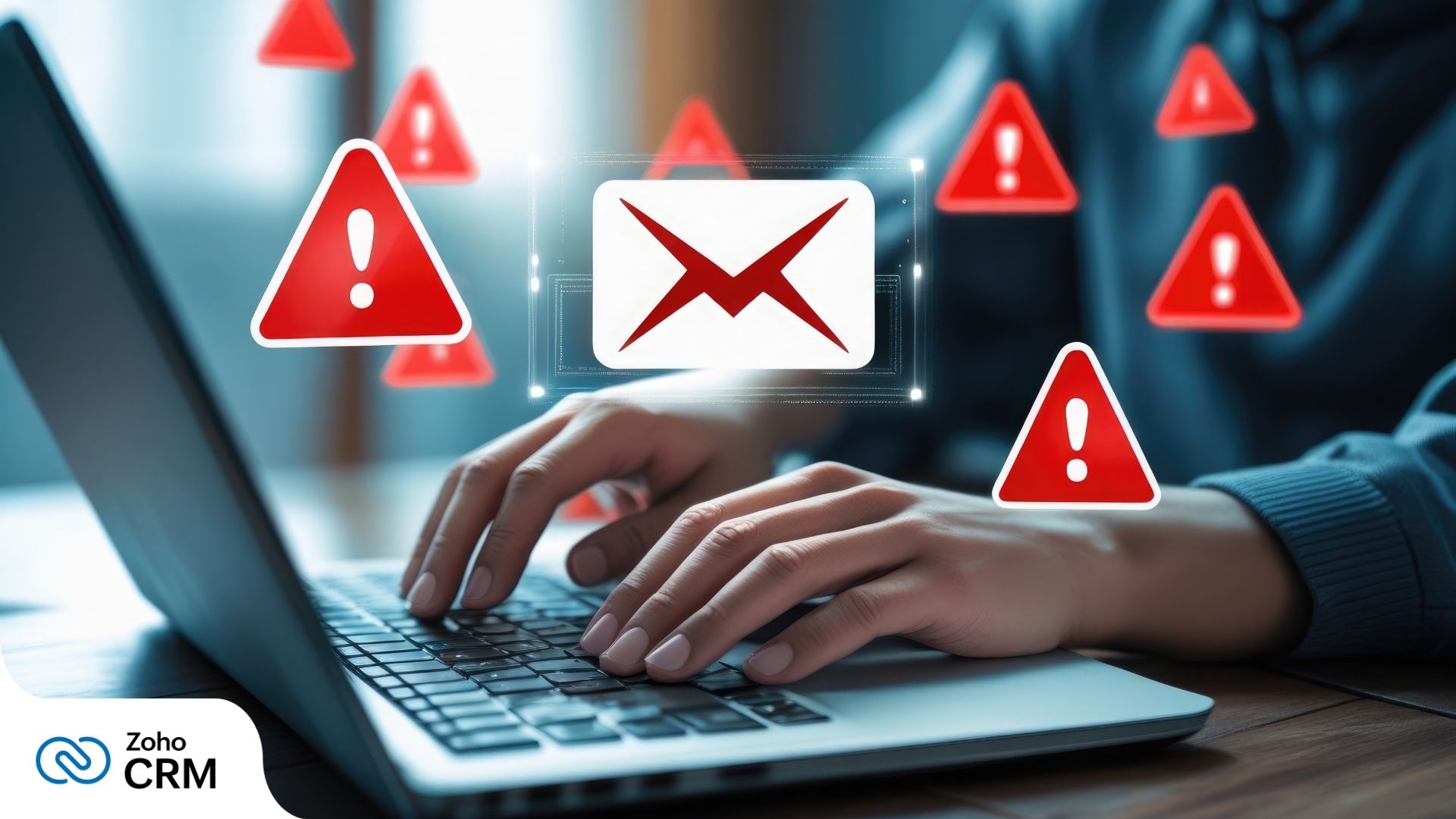The seven stages of a sales cycle and how to build and improve your own
- Last Updated : July 4, 2024
- 2.3K Views
- 9 Min Read

Implementing a comprehensive sales cycle that you can scale across your organization can help your sales team consistently close opportunities and generate revenue for your business.
By investing time into planning and mapping out your sales cycle, you eliminate bottlenecks that can arise from relying completely on the experience and connections of the veterans on your sales team and empower every sales rep—regardless of their level of experience—to contribute to the growth of your business.
What is a sales cycle?
A sales cycle is a series of well-defined, repeatable, and scalable actions that your rookie and veteran sales reps alike can easily take to engage with leads and convert them into paying customers. From the first contact with each lead your marketing team brings in until the moment that lead makes a purchase—and even beyond—every action you take and every engagement you have is part of your sales cycle.
The building blocks of a sales cycle
To build a successful sales cycle, you must ensure that your sales reps become familiar with and focus on four key disciplines. Regardless of your sales cycle's length or complexity, the following four disciplines will always be at the core of everything you do:
Know your offerings - Before you start talking to customers, you must gain a deep understanding of what your business offers: your various products and services, the pros and cons of each one, how they stack up against your competition, and most importantly, how they can seamlessly integrate into the lives of your customers.
Know your customers - Once you have a strong grasp on what you offer, you must also understand whom those offerings are meant for. Familiarize yourself with the characteristics of your ideal customers: the size of their businesses, whether they're B2B or B2C, their industries, purchasing power, organizational hierarchy, and more.
Engage and close the deal - The next discipline is the bread and butter of every sales rep's work life, and it doesn't really need to be explained. You have your prospect, and you have knowledge about your offerings—and now the challenge is to engage with the prospect meaningfully to showcase the value of what you offer and convince them to sign the dotted lines and open their wallets.
Nurture relationships after sales - Happy customers are more likely to buy from you again, so your work doesn't end with a purchase. Instead, a bigger challenge arises: continually nurturing your existing customer relationships to create cross-sell or upsell opportunities, turning customers into brand advocates, and even referring folks from their circle to your business.

With an understanding of the underlying disciplines, let's now look at the different steps involved in a standard 7-step sales cycle.
The seven-step sales cycle
Let's explore a standard seven-step sales process that serves as a template you can incorporate into your operations as-is or customize based on the types of engagement you expect to have with prospects. Use this outline to create a solid sales process that can help you improve conversions and your business's bottom line.
1. Build your ideal customer profile
Before you start interacting with them, it's vital for every sales rep to understand the prospects your business is targeting. To do so, you need to create an ideal customer profile (ICP) for your business:
Look at your best customers and identify the common factors between them.
Research their industries as well as find industries where your offerings can have a meaningful business impact.
Find your competition's customers and augment your profile with their demographic and psychographic data.
Know where these prospective customers are usually active—online and offline—and interact with businesses and other buyers.
Once you have this profile mapped out, it becomes exponentially easier for your sales reps to focus on leads that have a higher chance of converting into paying customers based on how closely they align with the ICP you've defined.
2. Generate leads
Once you've identified your perfect customers, it's time to go out and get them. There are two primary means to get the leads you want your sales team to work on: inbound and outbound lead generation.
You can generate leads organically through well-written webpages, ebooks focused on key topics in your customers' industries, and webinars, as well as by engaging in community forums where your prospects are active. If you have the budget for it, you can also do some paid marketing through Google Ads, or ads on platforms like YouTube, Facebook, X, and LinkedIn.
But it's important for businesses to have a healthy balance of both types of lead generation to ensure that your sales team always has a steady supply of leads to engage and nurture.
3. Qualify the right leads
Convincing prospects to try your solution or make a purchase always demands a significant investment of time and resources for your sales reps. It's imperative that your team can quickly identify prospects that are worth investing in and push them further down your sales cycle, towards a purchase.
But you don't have to reinvent the wheel here; you can rely on a number of trusted standard frameworks, like BANT, FAINT, MEDICC, and CHAMP to qualify your best prospects and funnel them deeper into your sales cycle.
These different frameworks have the same underlying principles: check if the lead matches your ICP, gauge whether they have a practical need for your offerings, confirm whether you'll be adding value compared to their current vendor, and make sure that the lead has the necessary decision-making authority and budget to make a purchase.
4. Understand prospects' requirements
Once you know who your best leads are, you need to start getting into the details of the challenges they face. Hop on a call to converse with them and ask as many questions as possible so you can truly understand where the prospect is, what their pain points are, and what they hope to achieve with your offering.
If you identify genuine pain points during this conversation that you can address, you can set up a follow-up call or a meeting to take the discussions further. But if instead you determine that that customers wouldn't experience a significant improvement by adopting your solution over their current vendor—or even other competitors they may be looking at—you can shift your efforts towards other qualified leads.
5. Showcase your solution with a personalized pitch
Once you have all the important details you need from your prospects, you now need to create a pitch that's personalized to their needs and addresses all the pain points they may have brought up during your initial conversations.
Ensure that your pitch offers a solution to the customers rather than being a feature dump of your offerings and align it with their business and industry. Doing so conveys that you genuinely care about adding value to the business of your prospects and improves your chances of converting them.
Back up your pitch with details like ROI and improvements your existing customers have seen, along with strong anecdotes and testimonials from them. Regardless of how convincing your pitch is, it's always more convincing to hear from someone who has used your products and seen first-hand benefits.
6. Address objections and close strong
As with any negotiations, there are bound to be various objections raised in response to your pitch. It could be anything, but some of the most common objections are about your capabilities, scalability, interoperability, price, and contracts with existing vendors.
Address these with confidence and emphasize the value you brought to businesses that have trusted you. If you were unable to address these objections initially, make a note, check with your team, and formulate a response to share with prospects in a follow-up call as soon as possible.
Once you've addressed these objections, send out a contract and communicate your expectations regarding the timeline for their decision. Be flexible with your contracts and terms if you can, or offer limited-time discounts if it's absolutely necessary, and close the deal confidently.
7. Enrich and nurture relationships for long-term growth
The customer's signature on the dotted line doesn't signal the final stop in their journey; instead, it's merely the starting point of another business journey—one of consistent engagement and nurturing the relationship for mutual growth.
Connect with your customers frequently to see if they require assistance, help them resolve issues, and keep them updated on any new developments in your offerings. This helps forge a strong relationship that could open new avenues of business opportunity in the form of cross-selling and upselling, and could even result in your existing customers referring people they know to your business.
Further reading: Essentials of B2B sales: Understanding & Building a Strategy
Maximize the benefits of your sales cycle with a CRM
To ensure you can make the most out of the sales cycle you've built, it needs to be easy to follow and scale as your business grows. The easiest way to do this is to replicate this sales cycle in a customer relationship management (CRM) tool.
A CRM solution will enable you to create a digital replica of your sales cycle, giving every sales rep a clear picture of the granular actions they need to take at every step of the cycle.
In addition, your team gets access to a powerful tool they can use to manage leads, prioritize which ones to engage and nurture, and track deals until closure. Here are some key areas where a CRM can greatly impact your business:
Lead management - Make the most of your marketing investments by funneling leads from various lead gen activities into a central repository for nurturing and follow-ups.
Deal management - Track every deal from initial discussions until closure, giving every stakeholder the full context they need for each deal along the way.
Real-time engagement - Get notified about customer responses in real time so you don't miss out on opportunities to address customer needs and strengthen your relationships.
Powerful automation - Automate various processes like lead assignment, reviews, escalations, and various manual activities like sending emails, scheduling tasks, or updating information in the CRM or across other apps.
Performance management - Manage sales forecasts and encourage your reps to achieve targets set for them.
Analytics - Track various metrics and data from across your sales operations to refine your overall sales process.
To a modern business, a CRM is not just a great asset to have but a fundamental tool that needs to be a part of your tech stack. So it's vital to choose the right CRM to bring your sales cycle to life and power your growth.
Sales cycle optimization
As with every other kind of process, you can always find ways to refine your sales cycle, make it more effective, and refine it through iteration. Some of the key areas you can analyze and improve are the quality of leads your sales team obtains, the communications you send to nurture your leads, the amount of time it takes for you to close deals, and the overall efficiency of the different tasks that your team undertakes throughout the process.
Below are a few of the aspects you can look at improving, which in turn will have a broader impact on your overall sales cycle:
Lead conversions - Look at the quality of leads you're working with. Measure the number of leads you generate versus the number of leads you convert into opportunities. If the conversion rate is too low, you should go back and fine-tune your customer profile, and focus on generating more leads that are in line with your updated ICP.
Sales cycle length - Ideally, your sales cycle should be as short as possible, but oftentimes, the cycle is always drawn out due to the sheer number of stakeholders involved. But look at the time it takes for a record to move between the different stages of your process to identify stages where there's friction and stagnation so you can address these inefficiencies and ensure that opportunities move through your sales cycle as quickly as possible.
Use a CRM - As we just discussed, having a CRM solution in place will go a long way in making your sales cycle more efficient. It helps you at every step of your sales cycle by giving you quantitative information about your business's performance. So it's critical to choose the right CRM solution for your business.
A carefully crafted sales cycle can elevate the performance of every sales rep, as well as the performance of your business overall. It provides clarity into what needs to be done at every point of engagement with your leads and customers, which ensures a positive experience for your sales team and your customers.


